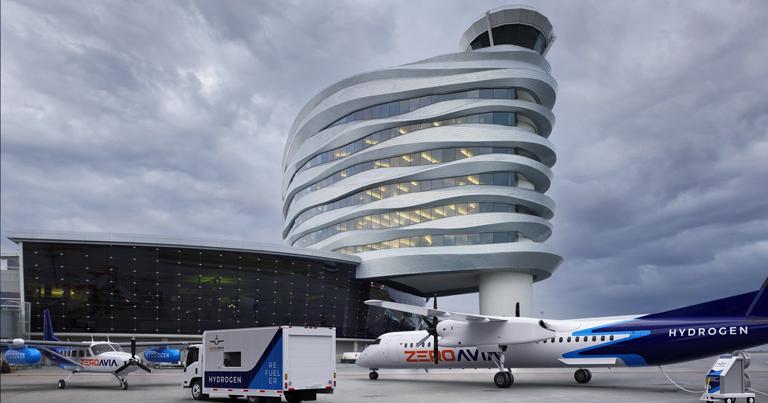
Edmonton Airport (EIA) and ZeroAvia have announced a collaboration to explore opportunities to develop the hydrogen infrastructure required for delivering zero-emission flights and decarbonising ground operations.
Under the agreement, EIA will work with ZeroAvia to develop hydrogen infrastructure at both the main airport and Villeneuve Airport. The partnership targets exploring the use of hydrogen for decarbonisation of aircraft operations, and also the wider airport ecosystem.
To support the collaboration, ZeroAvia will leverage its experience in developing and operating its Hydrogen Airport Refuelling Ecosystem (HARE). The partners will begin with gaseous hydrogen as a fuel, whilst exploring a shift to liquid hydrogen – necessary to support aircraft above 50 seats.
The collaboration will see ZeroAvia and EIA first conduct a pilot programme which will fuel a demonstrator aircraft and other operations with the deployed hydrogen ecosystem. The next step will entail working towards establishing some of the world’s first commercial routes.
The partnership expands on an already impressive set of sustainability initiatives at EIA, including the construction of the world’s largest solar farm at an airport set to begin construction in late 2022.
Myron Keehn, VP, Air Service, Business Development, ESG, and Stakeholder Relations, Edmonton International Airport, said: “We are excited to work with ZeroAvia, a global leader in zero-emission aviation. We believe that hydrogen will be a key technology to decarbonize aviation and airport operations for a net-zero future. ZeroAvia’s innovations, achievements, and shared values made it natural for us to develop a collaboration. Airports can help drive the adoption of hydrogen, thereby reducing emissions and improving air quality across the scope of their operations and beyond.”
Arnab Chatterjee, VP, Infrastructure, ZeroAvia: said: “Edmonton International Airport has been a leader in pushing the envelope in efforts to tackle emissions using innovative technology. The massive renewable installation, natural resources, flight operations and administrative autonomy, makes EIA a great partner for us.”
Zero-emission air travel has the potential to better connect some of Canada’s remote and underserved regions by offering affordable and low impact travel and commerce, supported by zero emission, low noise operation of its pioneering hydrogen-electric engine technology. Some of the small, but vital routes currently operated from EIA and Villeneuve utilise the airframe type, within the target range, that ZeroAvia’s 600kW engine will support from 2024 on. The ZA600 is designed to power 9-19 seat aircraft up to 300 nautical miles and will be flight tested for the first time in a 19-seat Dornier 228 within the next few weeks.






